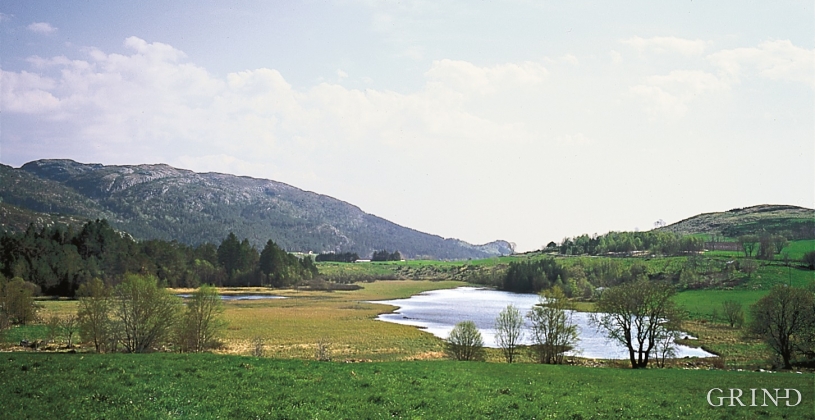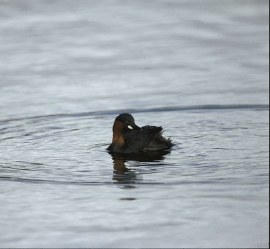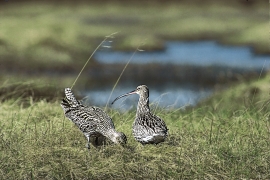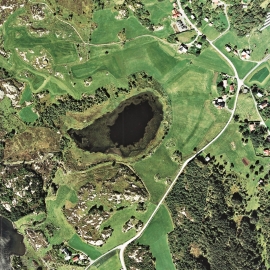Published: 22.07.2015 | Author: Stein Byrkjeland
Rimbareidtjørna tarn today has grown in quite a lot. Great care is needed in the future in order to ensure that important natural areas aren't lost.Svein Nord)
At nesting time you cannot avoid hearing the calls of the curlew or the snipe along the narrow road through the cultural landscape from Rimbareid to Vestbøstad. And on late summer evenings, the intense song of the sedge warbler rings out over the two characteristic tarns in the area.
In order to protect the birdlife, Rimbareidtjørna tarn and Vestbøstadtjørna were made into nature preserves in 1995. These wetlands are not large, mainly because the tarns were lowered several times through the years in order to gain more agricultural land. Therefore, especially Rimbareid tarn has largely grown in today. In large parts of the year it can be difficult to see the water here, but the water that you cannot see has been discovered by several types of birds. The birds are likely to be well camouflaged, but are easy to hear on a quiet spring or early summers’ evening.
It is much easier to find the wetlands birds by Vestbøstadtjørna tarn – partly because the water system hasn't grown in as much, but also because an observation tower has been built here on a small hill by the water. Everyone who wishes may use this little tower to experience the birds, or to get information about the area. On agricultural land between Rimbareid and Vestbøstad it is not unusual to see small flocks of plovers, either resting on their migrations or waiting for the snow to melt in the mountains so that they can begin their nesting season. And if you do not find the lapwings, they will find you.
Several species of duck nest by Vestbøstadtjørna tarn, including the mallard, teal, and some years wigeon. The reed bunting and sedge warbler are commonly seen and heard from the bushes and thickets. The water is rich in frogs. More than 80 grey herons have been seen at once, hunting for a tasty, preferably slippery snack. The little grebe nested for the first time in Hordaland by Rimbareidtjørna in 1998. The year after, a pair - surely the same one - nested in Vestbøstadtjørna. These birds stay here the whole year, as long as there isn't ice on the water.
If you wish to see the Little grebe up close, you have to proceed very cautiously. If it feels threatened, it will dive under water and can remain there for a long time. Only its beak barely breaks through the water's surface, so that the bird can breathe. (Ingvar Grastveit)
- Fylkesmannen i Hordaland. 1997. Rimbareidtjørna naturreservat. Informasjonsplakat.
- Fylkesmannen i Hordaland. 1997. Vestbøstadtjørna naturreservat. Informasjonsplakat.
- Odland, A. 1992. Skjøtsel av våtmarksreservat i Hordaland. NINA oppdragsmelding 172.






